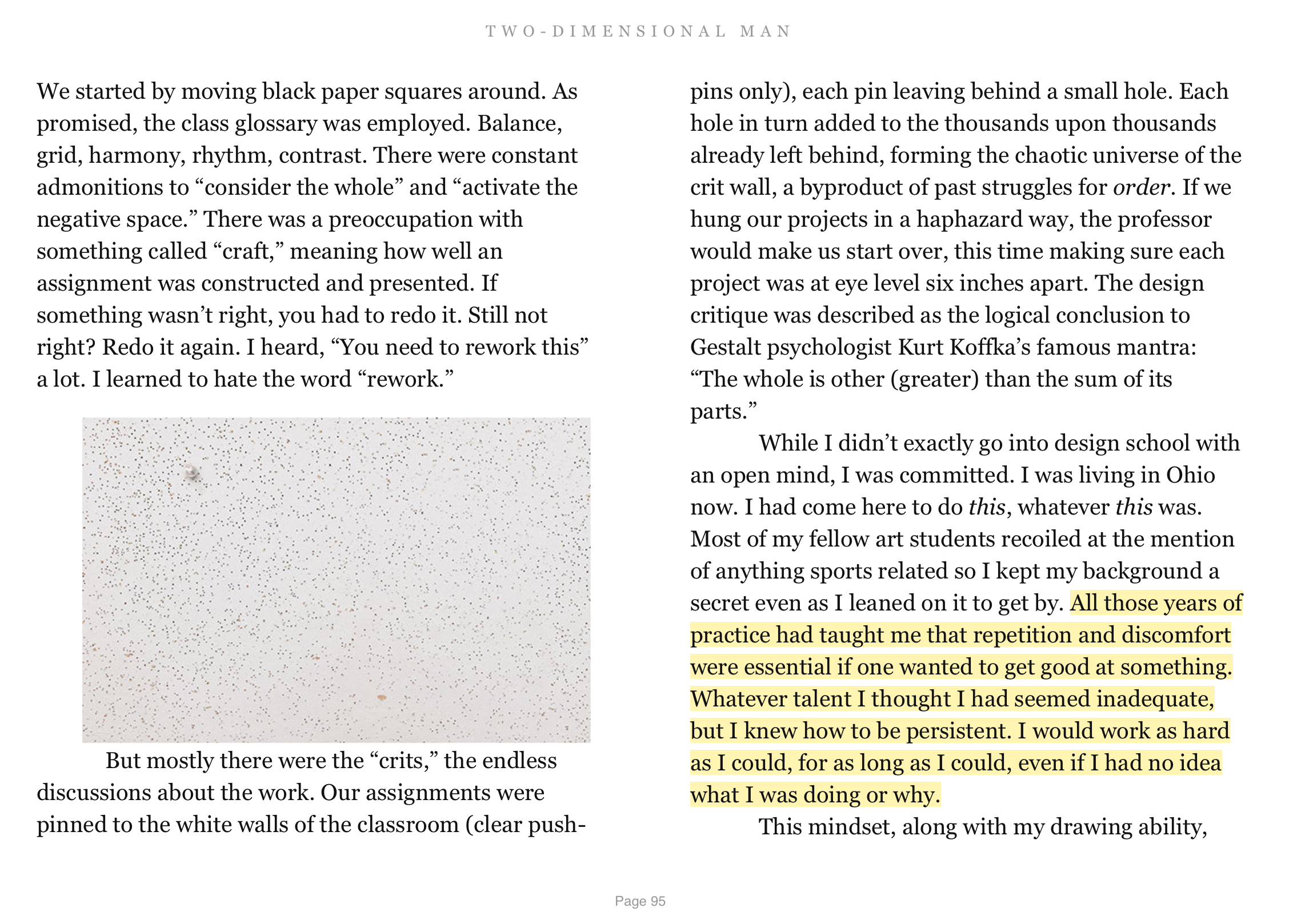Syllabus
Course Information
Basic Graphic Design I
DSD-2020-A
September 13–December 20, 2021
Monday 12:10pm–3:00pm
209 E 23 St, Room 303
Instructor
Philip DiBello
pdibello@sva.edu
Course Description
This course is an introduction to various aspects of visual communication. We will cover form, typography, layout and general design techniques. Much of our first semester will be spent honing your craft and introducing you to the fundamentals of graphic design. It’s important for you to develop your vocabulary. These assignments are rigorous by nature. Through repetition these concepts will become habit.
“The attention to details requires discipline.
There is no room for sloppiness, for carelessness, for procrastination. Every detail is important because the end result is the sum of all the details involved in the creative process no matter what we are doing. There are no hierarchies when it comes to quality. Quality is there or is not there, and if is not there we have lost our time. It is a commitment and a continuously painstaking effort of the creative process to which we should abide. That is Discipline and without it there is no good design, regardless of its style.
Discipline is a set of self imposed rules, parameters within which we operate. It is a bag of tools that allows us to design in a consistent manner from beginning to end. Discipline is also an attitude that provides us with the capacity of controlling our creative work so that it has continuity of intent throughout rather than fragmentation. Design without discipline is anarchy, an exercise of irresponsibility.”
MASSIMO VIGNELLI, The Vignelli Canon
Student Expectations
You're expected to complete each assignment in the time permitted. Know there will be general costs required for materials such as paper, foam core and color prints as well as hand tools like knives, blades and rulers. Craft is a critical component to your assignments, understand that frayed, crumpled, ripped and uneven work is not acceptable.
Attendance is critically important to your the success of your assignments and your letter grade. You’re required to be in class at it’s start time. If work will be shown, it should be up on the wall once you walk in. Take pride in your work and display it properly. Hang it with clear thumbtacks and make sure it’s straight and orderly.
Attention during class is mandatory. You’re expected to engage in critique, both by giving and receiving feedback. Listen and participate during critiques even if what’s being discussed is not your work. The use of any device is not permitted. If you’re seen using a phone or laptop during crit you will be asked to leave the classroom without the option to take your work home.
Attendance Policy
You’re given one absence without repercussion. After this one absence, your grade will drop one letter for each subsequent missed class. If you miss three classes you will be withdrawn from the course, no exceptions. Tardiness will not be tolerated. Class starts promptly at 12:10, and the classroom door will be closed at 12:20. If the door is closed you are not permitted to enter and your tardiness will be counted as an absence.
Grading Breakdown
Grades are a combination of the quality of your work, class participation and progress. Simply showing up will not make you pass the course. You must be prepared for the days lesson, completing any homework or readings assigned and ready to discuss.
A
Your work is of exceptional quality and reflects mastery of the material covered in class. Your class participation is outstanding. Your work steadily improved throughout the semester.
B
Your work is very good and satisfies the goals of the course. You participate in class discussion.
C
You turn in assignments and did not miss more than one class.
F
Your work did not meet the requirements for this class. You did not complete all projects or missed 3 classes. You will receive no credit.
Suggested Books
Typographie: A Manual of Design by Emil Ruder
The New Typography by Jan Tschichold
Grid Systems / Raster Systeme by Josef Müller-Brockmann
The Elements of Typographic Style by Robert Bringhurst
Detail In Typography by Jost Hochuli
The Typographic Desk Reference By Theo Rosendorf
Designing Type by Karen Cheng
Design as Art by Bruno Munari
Typography References
ITC
Monotype
Font Shop
Linotype
URW++
Commercial Type
Klim Type Foundry (Kris Sowersby)
Tobias Frere-Jones
Hoefler & Co.
Open Foundry
Students with Disabilities
In order to receive academic accommodations due to a disability, a student must first register with the Office of Disability Services (ODS). Students approved for accommodations will be given an ODS Accommodation Letter to submit to their instructors. If a student does not provide an ODS Accommodation Letter to their instructor, they will not be eligible to receive accommodations in that course. All instructors are required to adhere to SVA’s policies regarding accommodations for students with disabilities. Students who have a need for academic accommodations, or suspect they may have a disability, should contact the ODS via telephone: 212-592-2396, or visit the office: 340 East 24th Street, 1st Floor, New York, NY 10010, or email: disabilityservices@sva.edu.

PAUL SAHRE, Two Dimensional Man (excerpt)